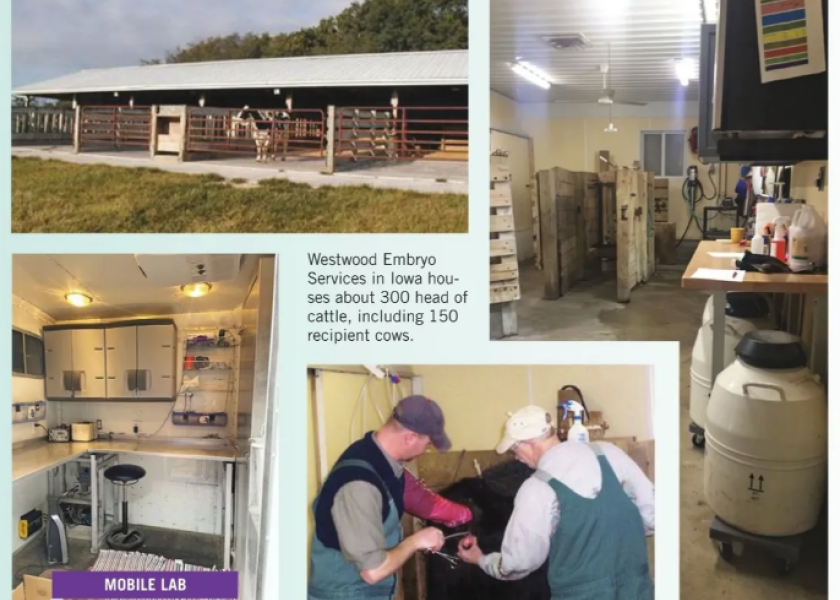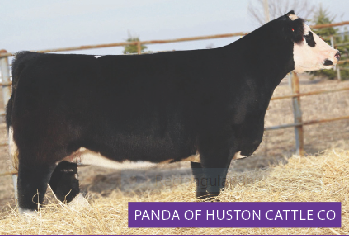DVM's Business Provides Top Genetics to Beef Producers Here and Abroad

Nestled in the countryside of Waverly, Iowa, lies a quaint livestock operation. While the farm might look like most others you’ve seen, it’s far from the norm.
Westwood Embryo Services, a bovine embryo transfer clinic, has operated from this farm since its inception more than 35 years ago. The operation is home to Dr. Michael Pugh and his family, along with their own herds and clients’ cattle. Collectively, Westwood houses nearly 300 head.
“We run about 150 recipient cows that we either sell as pregnancies or calves for customers,” Pugh says. “Then we house and flush donor cows at the clinic at a rate as high as 90 or 100 head at any given time.”
But these numbers don’t come close to the total head of cattle Westwood sees each year.
Veterinary Lab on Wheels
In the busy seasons, Pugh and his team hitch a portable lab to a truck and hit the road, traveling to clients spanning Iowa and Illinois,
to flush and transfer upward of 9,500 embryos.
While most flushed embryos will stay in the U.S., an average of 400 embryos will make their way across borders into countries like China, Russia and Chile. However, COVID-19 closed those borders and cast a shadow on Westwood’s export totals.
“The global economy has been so unstable that people are getting concerned about spending money on quality genetics,” Pugh says. “In the past two or three years, our export numbers have plummeted to as low as 30 to 40 shipments each year.”
Checking the Boxes According to Pugh, the pandemic is just one of the many brick walls he’s encountered in shipping embryos.
“People don’t understand there’s a lot that goes into each shipment,” he says. “There’s testing a cow’s health and understanding each health requirement respective to each country. It takes time to learn each country’s rules, breed and flush according to those rules, then ship.”
Start-to-finish, Pugh says someone looking to purchase embryos with top genetics from the U.S. can expect a six-month timeline.
However, he says most international producers seek middle-class U.S. genetics, as those EPDs are “still better” than foreign top-end genetics.
Tricks of the Trade
In his 17 years as an embryo transfer veterinarian, Pugh has learned many tricks of the trade. He shares two lessons he’s learned to keep any business running successfully:
1. Understand how to work with all types of personalities.
“When you go to vet school, you’re taught science and tech, but you still have to deal with people — whether it’s your client, employees, neighbors or people in the community,” Pugh explains. “Dealing with people and all different personalities is something we can get through now that we know how to do it.”
2. Adapt to new technologies.
“Our industry has changed and is ever evolving,” he says. “When I started doing ET [embryo transfers], in-vitro was a research thing. Now it’s a common, core part of what we do every day. Had we not adapted to that technology, we probably wouldn’t have half as much work as we do now.”
Meet The Celebrities
At least two renowned cows have made their way through the embryo transfer stall at Westwood: A club cow, Panda, was born in 2007 and later sold for half interest at $75,000.
Panda was followed by Dolly, a Holstein cow that was the No. 1 TPI Holstein cow bred at the time she was housed at Westwood.








